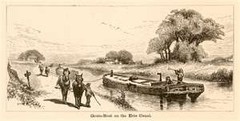AMSCO United States History 2015 Edition Chapter 8 Nationalism and Economic Development, 1816-1848
| 5937800089 | Era of Good Feelings | Term to describe James Monroe's period as president (1817-1825). The Democratic-Republicans party dominated politics. On the surface everything looked fine, however there were conflicts over tariffs, the national bank, internal improvements, and public land sales. |  | 0 |
| 5937800090 | sectionalism | Identifying more with a certain section of the country rather than the entire country |  | 1 |
| 5937800091 | cultural nationalism | pride and love of one's country and the characteristics that define it; i.e. art, music, literature |  | 2 |
| 5937800092 | economic nationalism | Political movement to subsidize internal improvements such as roads and canals. Also the protecting of US industries from European competition. |  | 3 |
| 5937800093 | Tariff of 1816 | The first protective tariff in the US, it helped protect American industry from competition by raising the prices of British manufactured goods. |  | 4 |
| 5937800094 | protective tariff | A tax on imported goods that is intended to protect a nation's businesses from foreign competition. |  | 5 |
| 5937800095 | Henry Clay; American System | His proposed plan for advancing the nation's economic growth consisted of three parts: 1) protective tariffs; 2) a national bank; and 3) internal improvements. The internal improvements to be funded by the national government were not approved because James Monroe felt that the Constitution did not allow for such use of federal funds. |  | 6 |
| 5937800096 | Panic of 1819 | The first major financial panic since the Constitution was ratified; marked the end of economic expansion and featured deflation (value of US money going down), depression, bank failures, foreclosures on western farms, unemployment, a slump in agriculture and manufacturing, and overcrowded debtor's prisons. (p. 153) |  | 7 |
| 5937800097 | National (Cumberland) Road | A paved highway that extended more than a thousand miles from Maryland to Illinois. It was built using state and federal money over many years (1811-1852). One of the few roads crossing state boundaries. (p. 161) |  | 8 |
| 5937800098 | Erie Canal | A canal built in 1825 in New York that linked economies of western and eastern cities. It lead to more canal building, lower food prices, and stronger economies. (p. 161) |  | 9 |
| 5937800099 | Robert Fulton; steamboats | In 1807 he built a boat powered by a steam engine. It made shipping easier and cheaper. (p. 161) |  | 10 |
| 5937800100 | railroads | A major economic development of the 1820s. A method for carrying passengers and freight. They made the Midwest a major power. (p. 161) |  | 11 |
| 5937800101 | John Marshall | Chief Justice of the Supreme Court from 1801 to 1835. A Federalist who favored the central government and the rights of property against advocates of state's rights. Even when he was outnumbered in the Supreme Court, Republican justices sided with him. (p. 153) |  | 12 |
| 5937800102 | Tallmadge Amendment | Proposed solution to Missouri becoming a state. It forbade slavery in Missouri and said that all black children would be free after the age of 25. It did not pass in the Senate and angered southerns. (p. 156) |  | 13 |
| 5937800103 | Missouri Compromise | An 1820 compromise that Missouri joined the Union as a slave state, and Maine joined as a free state. Congress also established a line across the southern border of Missouri (36°,30') saying except for the state of Missouri, all states north of that line must be free states or states without slavery. (p. 157) |  | 14 |
| 5937800104 | Rush-Bagot Agreement | An 1817 disarmament pact between U.S. and Britain, it strictly limited Naval armament on the Great Lakes. The agreement was extended to place limits on U.S. and Canada border fortifications. (p. 157) |  | 15 |
| 5937800105 | Treaty of 1818 | Treaty between U.S. and Britain which 1) shared fishing rights off the coast of Newfoundland; 2) joint occupation of the Oregon Territory for ten years; 3) set the northern limits of the Louisiana Territory at the 49th parallel. (p. 157) | 16 | |
| 5937800106 | Andrew Jackson | In 1817, this general lead a militia force to Florida where he destroyed Seminole villages and hung Seminole sympathizers. (p. 158) |  | 17 |
| 5937800107 | Florida Purchase Treaty | An 1819 treaty, in which Spain turned over Florida and the Oregon Territory to the U.S. The U.S. agree to assume $5 million debt and give up any claims in Texas. (p. 158) |  | 18 |
| 5937800108 | Monroe Doctrine | An 1823 doctrine by President James Monroe, warning European powers to refrain from seeking any new territories in the Americas. The United States largely lacked the power to back up the pronouncement, which was actually enforced by the British, who sought unfettered access to Latin American markets. (p. 158) |  | 19 |

